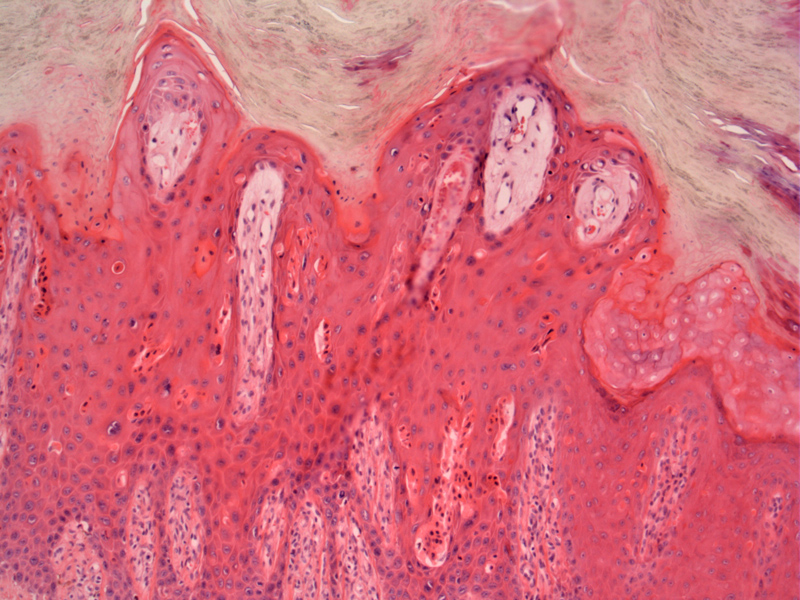

Author: Corinne Stephenson
The epidermis contains a markedly increased corneal layer and absent granular layer.
A higher power view lets you know you are not imagining the lack of keratohyaline granules.
Icthyosis is a general term applied to a disorder of keratinization caused by a genetic defect, a systemic genetic disease or an acquired condition.
The most common genetic disorder causing ichtyosis is Ichtyosis Vulgaris, an autosomal dominant disorder in which there is a defect in a major component of keratohyaline granules (profilaggrin), causing the keratin lamellae of the corneal layer to be more adherent.
Histologically, the corneal layer is mildly to moderately increased and the granular layer (where the keratohyaline granules would be) is absent.
Acquired icthyosis is associated with:
- Hodgkin lymphoma
- Cancer (breast, cervix and bronchus)
- Sarcoidosis
- Lupus
-Nicotinic Acid
Ichthyosis vulgaris is usually apparent in childhood and manifests as fine, white, flaky scaling on the trunk and extremities, with the face, neck and flexural surfaces spared.
For ichytosis vulgaris, the condition improves in humid weather and in the summer months. Florida would be a great place to go if you had this disease!
For acquired/secondary ichthyosis, treat the underlying condition.
McKee PH, Calonje E, Granter S. Pathology of the Skin with Clinical Correlations. 3rd Ed. Philadelphia, PA: Elsevier; 2005: Page.